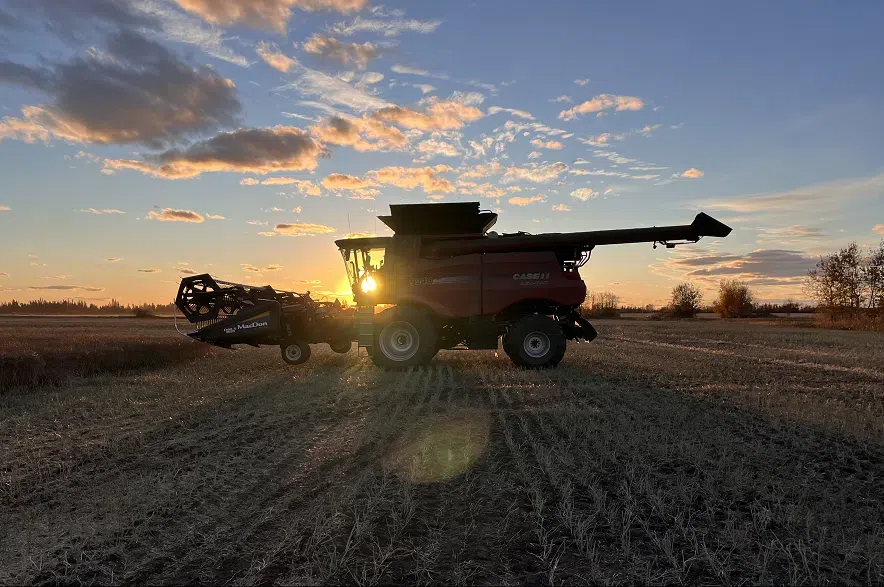Despite concerns of a late harvest due to wet weather in May and June, the Saskatchewan’s 2024 harvest began earlier than usual, and yields were generally above average for many crops.
According to the Ministry of Agriculture, harvest began in early August in some regions, and was in full swing across the province by the end of that month.
READ MORE:
- That’s a lot of pie! Sask. farmer grows 500-pound pumpkin
- Skyrocketing farmland prices a struggle for young farmers
- Harvest nears 80 per cent completion, but rain causes delays
“The early start to harvest allowed producers to get the crop off in good time and other field work to be done prior to freeze-up,” the ministry said in its latest crop report.
“Producers continue to hope for more rain this fall and a lot of snow over winter to improve moisture conditions for next spring.”
Thanks to an abundance of moisture in the spring and hot weather in July and August, crops developed rapidly around the province, leading to yields above the 10-year averages for all crops except durum, oats, canola and mustard.
The quality was high as well as the quantity, with the report noting that most high-acreage crops were graded in the top two categories.
Heading into the winter, many producers are hoping for some more moisture in order to improve topsoil conditions, but the ministry said the current moisture levels are better than they were at the same time last year.
“Provincial cropland topsoil moisture is rated as 49 per cent adequate, 44 per cent short and seven per cent very short. For provincial hayland, topsoil moisture is 42 per cent adequate, 45 per cent short and 13 per cent very short,” the ministry explained.
“Pasture topsoil moisture around the province is 37 per cent adequate, 45 per cent short and 18 per cent very short. Additionally, 35 per cent of Saskatchewan pastures are in good condition prior to the winter, 34 per cent are fair, 24 per cent are in poor condition and seven per cent are in very poor condition.”
According to the ministry, producers are still working hard to get their last field work done before the ground freezes, with many farmers out harrowing, applying fall fertilizer and drying grain.
“Once the snow flies, producers will enjoy a break from field work and continue planning next year’s operation,” the report read.
A full, detailed version of the crop report can be found on the Government of Saskatchewan’s website.











